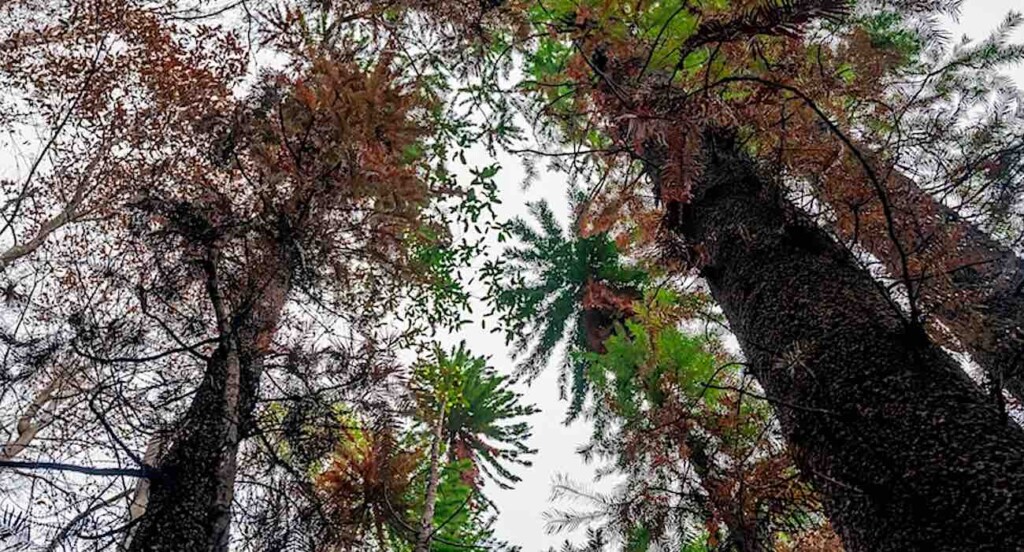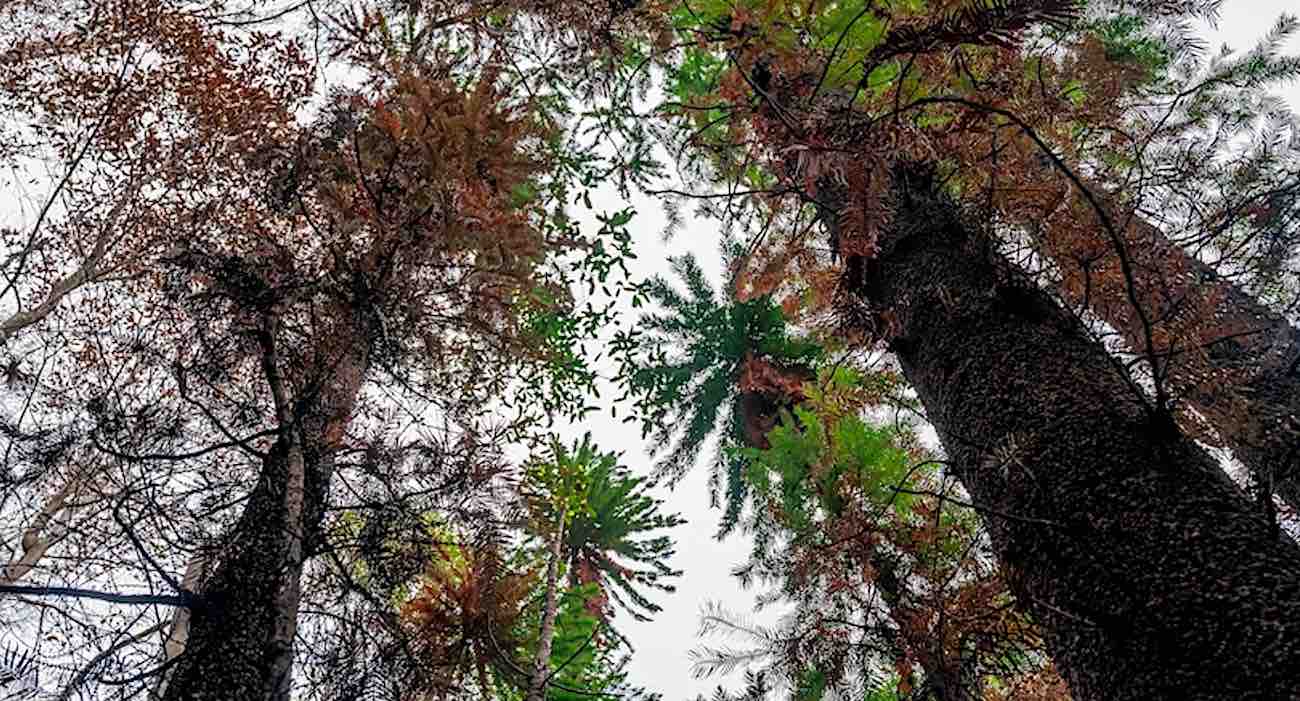
From Australia comes a story too cool to believe. Like a vegetable version of Jurassic Park or King Kong, a copse of pine trees from a species that evolved in the Cretaceous Era were found high in the mountains.
These living fossils, to use the classic phrase, survived both the comet impact and subsequent global firestorm that killed the dinosaurs, as well as two intervening ice ages to make it to our time, and Australian botanists are treating the specimens as a top-secret national treasure.
The Wollemi pine evolved 91 million years ago and went extinct according to the fossil record 2 million years ago, but in the Blue Mountains west of Sydney, a stand of 90 specimens were found high in the more remote peaks in 1994.
For the past three decades, and in extreme secrecy, a team of specialists from the National Parks and Wildlife Service (NPWS) of Australia has been gradually planting small clumps of the Wollemi pine in other locations to help ensure it has every chance to see another 91 million years.
It helps the story that the Wollemi doesn’t look much like any pine tree you’ve seen in the woods by your house. Sporting Granny Smith apple-green foliage that grows in a pattern similar to a fern, it has a covering of bark reminiscent of Coco-puffs.
“Wollemi Pine seedlings and saplings grow less than one centimeter a year. They won’t mature until they can reach the rainforest canopy and access the sunlight above,” research scientist Berin Mackenzie told national news, adding that they grow extremely slowly.
MORE STORIES LIKE THIS: These 385 Million-year-old Tree Roots Look Just Like Ours, and Tell a Tale Just Like Ours
The level of security is startling for a tree. From the original stand of 90 trees, hundreds now grow across three translocation sites. Visits to the sites are very rare, and avoided in all but the most necessary occasions. Workers have to decontaminate themselves of any seeds and sanitize their bodies to ensure they don’t bring disease or invasive species that could threaten the trees.
ABC New Australia heard from one scientist who rhetorically asked what a Wollemi pine smells like so he could respond with “methyl alcohol” from the sanitizing agents.
Before you resolve to go out looking for them, unauthorized entry into the sites is punishable by up to 2 years in prison and a fine of $330,000 according to the Australian Biodiversity Conservation Act. It’s possible such a visitor already visited the original grove, either by accident or design, because a parasitical tree disease has been detected among the original residents.
“One of the biggest dangers that we have is people actually come and visit these. We know people want to but they really can’t,” NSW Environment Minister Penny Sharpe said.
OTHER RARE PLANTS: He Found the Largest Old Growth Cedar in BC – The Tree of His Lifetime (LOOK)
Wollemi pine seedlings have been shipped across the world to botanical gardens, and can actually be purchased at nurseries as part of an effort to save the species and discourage people from trying to access the grove and translocation sites.
“The species was discovered in the nick of time and on the brink of extinction. We have a really rare and important opportunity here to intervene and help it persist,” research scientist Berin Mackenzie told ABC News Australia.
The first generation of scientists working on the project are now either retiring or nearing their retirement, and feel that passing their knowledge and training on to their pupils has been a true privilege.
SHARE This Incredible True Story About The Race To Save A Prehistoric Tree…




















